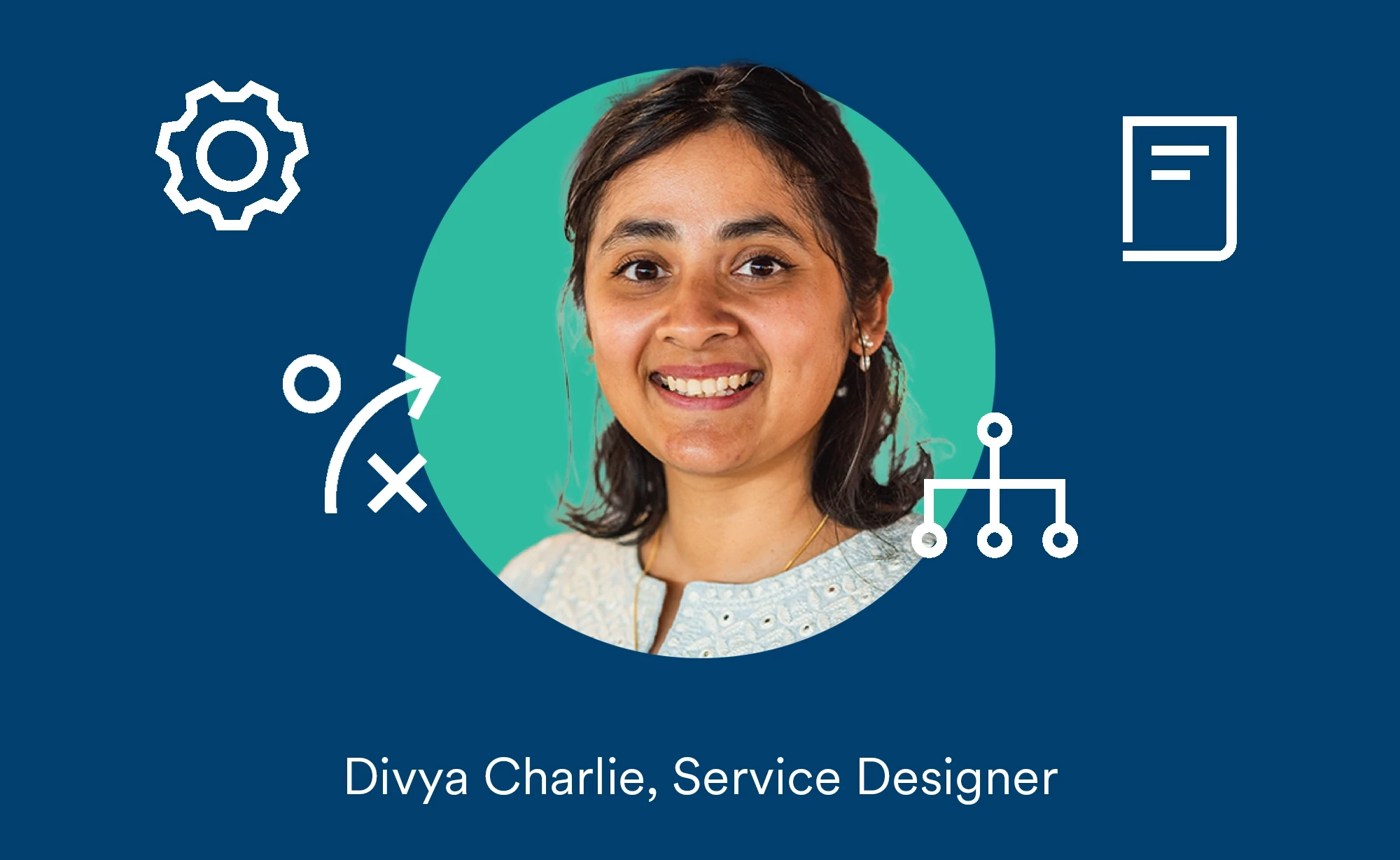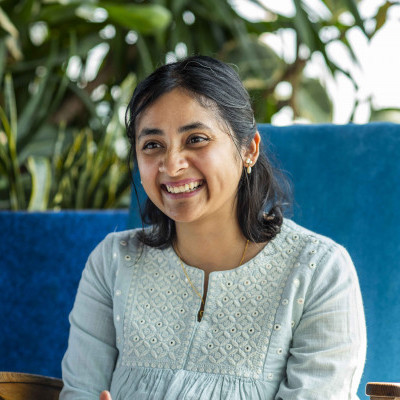Mima Moments, Divya Charlie, Service Designer
Divya Charlie, Service Designer at Mima shares the power of giving back to communities through design - making meaningful user experiences that go beyond user-friendly by creating something that represents someone's culture, language and expectations.

What inspired you to pursue a career in design?
It started as a creative outlet. I didn't want to take the traditional mainstream career choices. Initially through fashion design, I was really interested in how people talk about who they are through their clothing, through something visual. That's how I started getting interested in expression.
I then moved to digital product design and research. I experienced this tug of war between putting innovative or tech solutions first versus user understanding. Where decisions were made without actually understanding what the users wanted or what the realities were for their needs. That's how I decided I wanted to be a part of the voices that bridge the connection between creating good innovations, for all users.
I find it very motivating to be a part of creating something that people need. Especially for people that are misrepresented or underrepresented. It's my form of advocacy through design.
How do you define a meaningful user experience?
For me, a meaningful user experience is when someone feels as if they have been seen. It's during those moments, quiet moments, where you feel as if you've been recognised. Where the service you are going through, the product you are using, or the space you are seeing, it just fits. When you feel like someone has thought about your situation, and it's someone who has never met you. To me, that feels like designing a very meaningful user experience.
And it's not about impressing someone through design, but more about showing how you care about the people who are experiencing your space, service or product.
Those small details are what makes an experience meaningful. I also think that meaningful experiences are rooted in societal understanding. It's one thing to create something that's user friendly, but something entirely different to create something that represents someone's culture, language, expectations, or their world view. It's about creating a product that aligns with how people live and what they believe. This creates trust, and I think that's amazing.
What’s something unexpected that people often overlook in experience design?
Giving back. I think any design or anything related to design, or design research has to give back.
I really enjoy working with communities on projects related to social impact. However I've noticed a recurring issue in these spaces. We have the tendency to over-research communities and people with lived experience, and yet once the project ends, we move on without them. Co-design is the trendy thing right now, but in practice, it often only happens over a short period over time. We involve people briefly, gather their insights and then leave them behind. This pattern then repeats itself across different systems, people and organisations. For me, giving back is so important. It doesn't have to be a big grand gesture, it can just be making the research experience more engaging, more interesting for those involved.
It doesn't always have to be a sticky note workshop, it could be a walk in the park, having a meal. Another way to ensure participants have gained something from the experience is by showing how their contributions have directly shaped the outcomes. For example, we can highlight the new experiences they’ve had through the process, or the connections or confidence they've built along the way.
It's about being more transparent and having a more give and take relationship, rather than just taking.
That really affects how people engage with us, as design professionals or researchers. And it really makes the impact that we are working towards longer lasting, and more meaningful.
What is one design initiative that you feel most proud of, or you think has made the most significant contribution to improving experiences/services?
Culture centred design approaches. I’m very excited to be seeing so many more institutions and groups who are applying these culture centred design approaches. There are a lot of London museums, who are working with different communities, underrepresented/misrepresented groups, to curate exhibitions to show their past, or working with community groups or institutions to create more representative educational materials, so people can connect with who they are. It's very exciting. It shows how people are genuinely caring or trying to understand and respect the past, or the backgrounds or cultural perspectives that people are bringing in. It's not just an afterthought, it's something that they actually think right from the beginning that they want to include as part of the process. And I think that's the best part about it, that we are making the effort to do it right from the beginning.
It's not about just getting data, or information, or insights. It's building a relationship, not just for a project but throughout the life, or throughout various chapters. You are getting to showcase and collect emotions, stories, narratives. I think that's a more creative, and engaging way to get people to think about their communities.
I also find that when we use these newer design approaches, we get to be more creative and responsive in the ways we are researching. We get to experiment with methods, we are acknowledging that there were past power dynamics, there was trauma, there is history, we are learning so much. And we are learning how to respond to having those conversations. I think that is amazing progress and I really enjoy being a part of it.
I also think that meaningful experiences are rooted in societal understanding. It's one thing to create something that's user friendly, but something entirely different to create something that represents someone's culture, language, expectations, or their world view
What does the micro and macro mean to you?
Micro is the personal. How do you feel when you are experiencing something new, how do you feel when you are in the waiting room and someone is speaking to you? It's like a more emotional experience.
Macro is everything that is creating that environment. It's the funding, the policies, or any structure, or the history that you are coming with. All the things that influence how you are expressing yourself in a moment.
I think we, as design professionals, and as Mima, are sitting between the micro and macro. We are creating those conditions, where both of them talk to each other, and with each other. That's my understanding. We are building those experiences, building those conditions where we are not just assuming good experiences would happen. We are trying to understand what they are, we are trying to support them and we are trying to sustain the experiences.
Written by:

Divya Charlie
Service Designer
Divya is a creative service designer and researcher with experience in participatory design and community-culture projects. Divya explores the human and place based connections across diverse experiences and perspectives, driven by innovation for well-being. She believes that the best solutions emerge through people engagement in collaborative and shared vision environments.